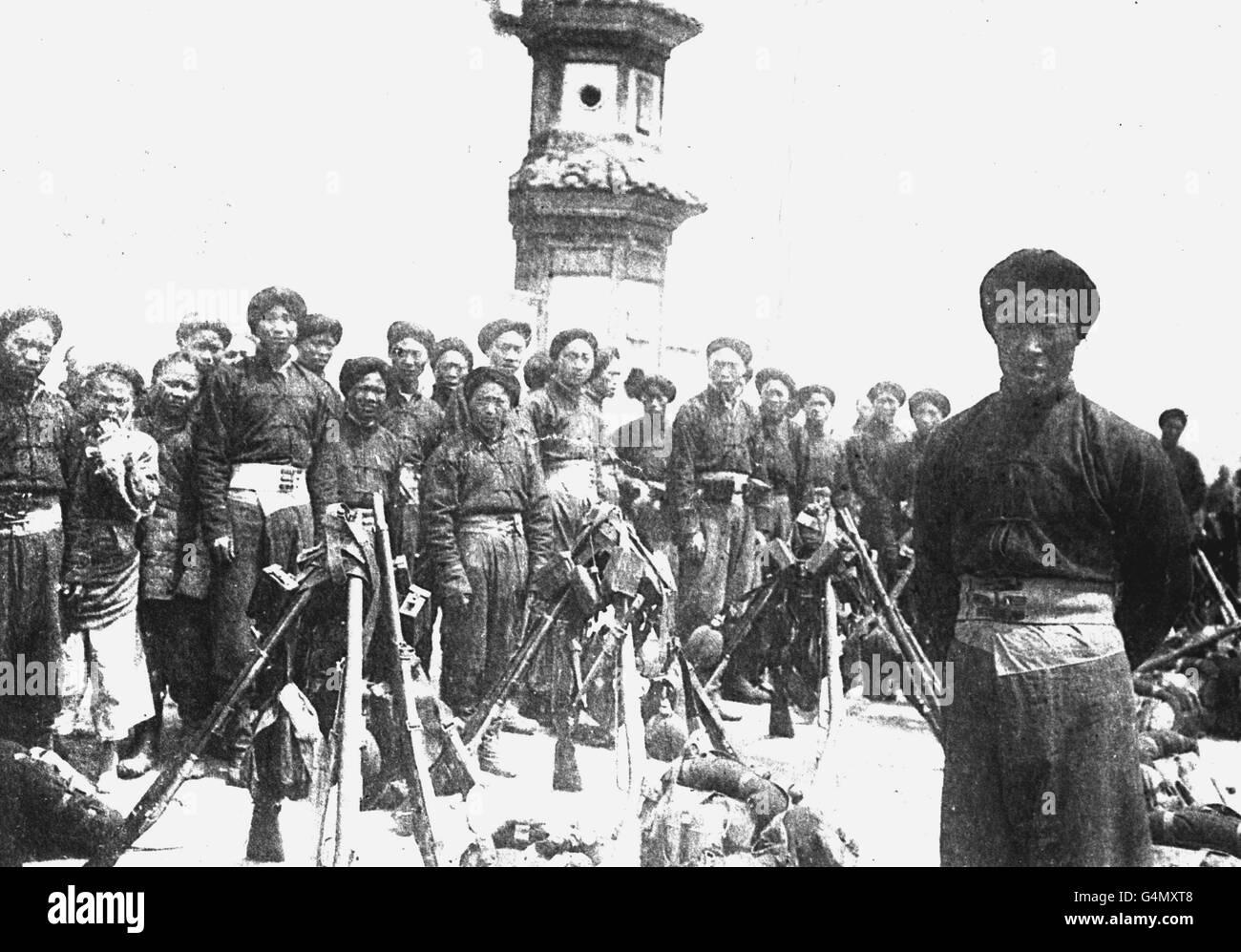Before the 1997 CPC National Congress, it was believed that the greatest historic achievement of the 1911 Revolution was that it overthrew the decadent Qing Dynasty (1644-1911), ended the 2,000-year-old autocratic monarchy and established the first bourgeois republic in China. The long term consequences of the Chinese Revolution is the end of a four thousand year monarchy to turn China to develop under the idea of socialism, switching people's belief of not accepting manchuism to imperialism, an increase of modernizing people lives in culture from western ideas and the establishment of the Republic of China, which all.
Chinese revolution in modern history after 1911 Coggle Diagram
4 A survey of key work published in China on the 1911 revolution in the decade 2000-09 is Kaiyuan, Zhang and Tong, Tian, " Xin shiji zhi chu de Xinhai geming shi yanjiu " ("Research on the Xinhai revolution at the start of the new century"), Zhejiang shehui kexue, No. 9 (2010), pp. 89 - 98 Google Scholar. The aftermath of the. The 1911 Revolution was important in that it overthrew 2,000 years of the imperial dominance in China and established a republic. The old regime lost its legitimacy after 1911. At the same time, the revolution was completely overshadowed by the Communist Revolution in 1949, and its meaning and importance remains obscure until the present day."
The revolt overthrew the six-year-old Emperor Puyi, and in 1912 opposition leaders established a Chinese republic. Lithograph illustrating the 1911 battle at Ta-ping gate, Nanking. From the Wellcome Library, London, CC BY 2.0. Nationalists vs. communists (except during WWII) The Chinese Revolution (1911-12) Li Yuanhong The Chinese Revolution was triggered not by the United League itself but by the army troops in Hubei who were urged on by the local revolutionary bodies not incorporated in the league. 
Chinese Revolution 1911 Stock Photos Chinese Revolution 1911 Stock
Launched by Chinese revolutionaries represented by Sun Yat-sen, the 1911 Revolution began with the Wuchang Uprising, an armed rebellion against the Qing Dynasty rulers that broke out on October 10, 1911 in what is today's Wuchang District, Wuhan City, in central China's Hubei Province. The history of the Xinhai Revolution began with the Wuchang Uprising, an armed rebellion against the Qing Dynasty rulers that broke out on October 10, 1911, in today's Wuchang District, Wuhan City, central China's Hubei Province. After Wuchang was taken, the revolutionaries quickly seized strategic locations Hanyang and Hankou, altogether known.
Chinese Revolution, (1911-12), nationalist democratic revolt that overthrew the Qing (or Manchu) dynasty in 1912 and created a republic. Ever since their conquest of China in the 17th century, most of the Manchu had lived in comparative idleness, supposedly a standing army of occupation but in reality inefficient pensionaries. The flash-point came on 10 October 1911, with the Wuchang Uprising, an armed rebellion among members of the New Army. Similar revolts then broke out spontaneously around the country, and revolutionaries in all provinces of the country renounced the Qing dynasty. 
Italian sailors Beijing China 1911 Beijing china Revolution
The Chinese Revolution of 1911 In October of 1911, a group of revolutionaries in southern China led a successful revolt against the Qing Dynasty, establishing in its place the Republic of China and ending the imperial system. Photograph of Revolutionaries in Shanghai The Cambridge History of China, Late Ch'ing 1800-1991,Volume 2 3. Jean Chesneaux, Marianne Bastid, and Marie-Claire Bergere, China from the Opium Wars to the 1911 Revolution 4. John K. Fairbank, The Great Chinese Revolution, 5. Arif Dirlik & Roxann Prazniak, The 1911 Revolution: An end and a beginning
In 1910, the Chinese Empire reasserted itself and occupied Tibet. However, this would be the decadent Empire's last triumph. All across China, revolutionary groups had formed to overthrow the regime, with one such group managing to seize power in the city of Wuchang on October 10, 1911. From there the revolution spread quickly, and, in January 1912, China was declared a republic. Revolutionary origins The 1911 Revolution had seemingly benign origins, beginning with disputes and protests over railway ownership in Sichuan province and surrounding areas. The flashpoint for revolution came in October when a republican-minded army unit mutinied in Wuchang, Hubei province. 
Causes of the first period of the Chinese civil war timeline
The Wuchang Uprising was an armed rebellion against the ruling Qing dynasty that took place in Wuchang (now Wuchang District of Wuhan), Hubei, China on 10 October 1911, beginning the Xinhai Revolution that successfully overthrew China's last imperial dynasty. It was led by elements of the New Army, influenced by revolutionary ideas from Tongmenghui. The uprising and the eventual revolution. 1,000 year old social system. 4,000 year old monarchy. Causes of the Revolution of 1911. 1) Elite politics with widespread support, against: 250 year old Qing Dynasty. 1,000 year old social system. 4,000 year old monarchy. 2) Corrupt and inefficient government. 3) Foreign intervention.










